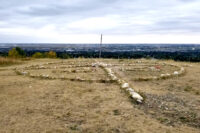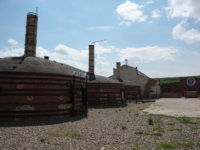Lethbridge County hosting nutrient management webinars
By Ry Clarke - Lethbridge Herald Local Journalism Initiative Reporter on January 25, 2023.
Lethbridge County is hosting a webinar series focused on nutrient management in farming practices to help local producers learn from experts for free.
Kicking the series off this week, Rezvan Karimi, research scientist with Lethbridge College, and Eric Bremer, with Western Ag, spoke about enhancing yield and nutrient use towards the efficiency of crops under subsurface drip fertigation, as well as how intercropping can work in southern Alberta.
Speaking to intercropping, Bremer educated about the yields and diversity when using this method.
“Intercropping, that is growing different crops in the same field. For example, instead of growing peas in one field, and canola in another field, we will cross them together and give them a nice name ‘piola’,” said Bremer. “What we are doing is getting that diversity within one year. Part of that diversity is temporal, some crops will take advantage of conditions early, other crops will take advantage of things later. Some crops are more deep rooted and they can take advantage of water lower down, and other crops are shallower and can take advantage of different space for resources.”
Bremer notes that intercropping has potential benefits with synergy, yield stability, reducing fertilizers and herbicides, reducing disease, overall seed quality, and soil health.
“We found that you could reduce nitrogen fertilizer requirements, which were the clear benefits with intercropping,” said Bremer. “This is a pretty adaptable system. If you have some parts of your field that are more nitrogen deficit than another, it is a way to take advantage of these things.”
Karimi spoke to participants regarding soil water and nitrogen distribution under subsurface drip irrigation (SDI) and fertigation systems.
“All of us know that agriculture faces great challenges in producing more crop-per-drop, or the recent approach of less drop-per-crop in arid and semi-arid regions,” said Karimi. “Irrigate agriculture is an important economic driver in the semi-arid area of the Canadian prairie provinces, including southern Alberta. The annual precipitation in southeastern Alberta averages between 300 to 500 millimetres, while we have evaporation in the same area between 700 to 800 millimetres. The deficit within the difference shows that in this area, agriculture depends on irrigation.”
Speaking towards the benefits of subsurface drips, Karimi notes how it helps not only with irrigation, but also nutrient delivery.
“SDI systems are prime candidates for applying a nutrient to a crop. That system can release water-soluble fertilizers with irrigation water directly to the root zone of the plant, called drip fertigation,” said Karimi. “It can lower the overall fertilizer requirements and increase nutrient use efficiency by synchronizing the application of water and nutrient.”
The next session will be held on Jan. 30 at 10 a.m. with Olds College’s Laio Silva Sobrinho speaking on technologies for remote management and monitoring in grazed pastures, and Werklund School of Agriculture ‘s Bob Hoffos speaking about drones and digital mapping in agriculture.
The series will conclude with the final session set for Feb. 6.
Registration is available at http://www.lethcounty.ca.
14-13




